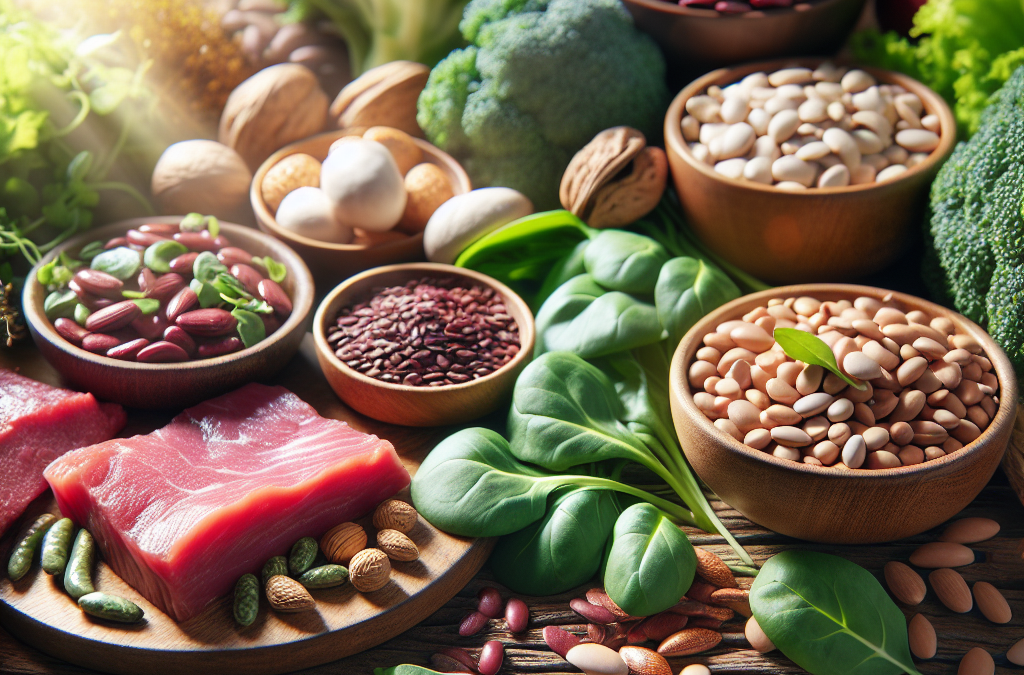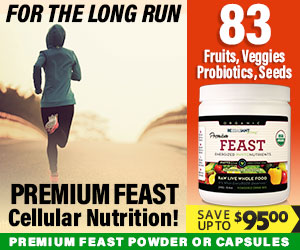Leafy Greens: The Powerhouses of Nutrition
Understanding Iron Content in Greens
When I talk about leafy greens, I can’t help but get excited. Spinach, kale, and Swiss chard are not just food; they are little powerhouses loaded with iron. For vegetarians and anyone looking to up their iron intake, these greens are a must. Not only are they versatile, but they also come packed with vitamins that help your body absorb iron better.
One of my favorite ways to enjoy these greens is in a smoothie. Just toss some spinach with banana, a dash of almond milk, and you’re good to go. You won’t even taste the greens! Trust me; I’m not joking. The iron and nutrients in these greens can do wonders for your energy levels.
Cooking them can enhance their flavor, too! Sautéing spinach with garlic or tossing kale in a salad can elevate any meal. The key is to include them regularly so your body starts to reap those iron benefits.
Beyond Just Iron: Other Nutritional Benefits
What fascinates me most about leafy greens is not just their iron content. They are bursting with vitamins A, C, and K, not to mention calcium and antioxidants! These nutrients work synergistically to keep your system in top shape.
Plus, incorporating greens into your diet can help reduce the risk of chronic diseases. Think about it — when you nourish your body with the good stuff, it rewards you, right? So, while we’re focusing on iron, we’re actually giving ourselves a nutritional boost!
Always remember though that it’s important to wash your greens thoroughly before cooking or eating raw. It’s a simple step that makes a big difference, keeping everything clean and healthy. In the world of nutrition, cleanliness matters!
Creative Recipes to Enjoy Leafy Greens
If you think leafy greens are boring, think again! There are so many creative ways to integrate them into your meals. For instance, why not try a green smoothie bowl? Just blend your favorite greens with some fruits and top it off with nuts and seeds. It’s so delicious!
Another great option is to make stuffed peppers with quinoa, black beans, and sautéed greens. Not only will you get your iron, but you’ll also have a beautiful colorful dish perfect for impressing guests.
Make it a habit to experiment with new recipes. Perhaps a leafy greens pesto or a green omelet? Trust me, the possibilities are endless when you get a little creative in the kitchen!
Legumes: A Plant-Based Iron Source
The Iron Richness of Beans and Lentils
Legumes have definitely changed my meal game. They’re loaded with iron and a fantastic protein source for vegetarians. Beans, lentils, chickpeas — you name it! Each type has a unique flavor and can really make your meals pop.
What I love about legumes is how versatile they are. You can toss them in salads, blend them into soups, or even make burgers! And they’re so hearty that they can fill you up without overloading you with calories.
Plus, if you’re someone who has a busy schedule, they’re super easy to prepare. You can cook them in large batches and freeze them for later. That way, you have an instant meal ready to go anytime you need it!
Pairing Legumes for Better Absorption
One neat trick I’ve learned is to pair legumes with vitamin C-rich foods to boost iron absorption. So, consider adding some lemon juice or bell peppers to your bean salad. Not only does it enhance the flavor, but it does wonders for your iron levels too!
Don’t forget about whole grains! Having a mix of whole grains with your legumes can promote better nutrient uptake. For example, rice and beans are not just a delicious combo but an iron-boosting one too! Good food, good vibes!
Cooking legumes properly is key, so make sure to soak them before cooking if you’re using dried varieties. It can cut down cooking time and ensure they’re easier to digest.
Creative Ways to Add Legumes to Your Meals
Making meal prep fun with legumes is so easy! You might start with a chickpea curry that’s packed with spices and flavors. It’s comforting, delicious, and will make your kitchen smell heavenly.
How about whipping up some black bean brownies? Yep, you heard that right! They’re fudgy, rich, and you’d never guess you’re eating beans. Your friends will be begging for the recipe!
And let’s not forget about hummus! It’s the ultimate snack, and with a sprinkle of cumin or smoked paprika, it goes from good to extraordinary. Just dip some veggies or whole grain crackers, and you’re set!
Nuts and Seeds: Little Powerhouses
Iron Content in Different Nuts and Seeds
Nuts and seeds are an absolute lifesaver for boosting iron levels without breaking a sweat. Almonds, pumpkin seeds, and cashews are my go-tos. They’re small but mighty when it comes to nutrients!
Adding them to your daily snack routine can make such a difference. Just a handful a day can help meet your nutritional needs. I often mix a handful into my morning oatmeal for a crunch that also boosts my iron intake. Win-win!
What’s cool is that they also provide healthy fats, which we need for overall well-being. Who knew something so small could pack such a nutritional punch?
How to Incorporate Nuts and Seeds Regularly
It’s super easy to add nuts and seeds into your meals. I love sprinkling hemp seeds on my salads or adding flaxseeds to smoothies. They blend in so well, and you won’t even notice they’re there!
Granola bars are another fantastic way to get nuts and seeds into your diet. I often make homemade bars with oats, honey, and a mix of my favorite nuts. It’s a perfect on-the-go snack that’s so filling.
And let’s not forget about nut butters! Spreading almond butter on whole-grain bread or a rice cake is such a tasty treat. It fills me up and keeps me energized throughout my day!
The Benefits Beyond Iron
Beyond iron, nuts and seeds also come loaded with antioxidants and fiber! These components can help support heart health and digestion. It’s like they’re doing more than one job for you!
Get an Amazing Discount on the Best Certified Organic Whole Food Supplement!
Moreover, incorporating a variety can ensure you’re getting a broad spectrum of nutrients. So go ahead, mix it up! A handful of walnuts here, some chia seeds there — your body and taste buds will thank you!
Just remember to keep an eye on portion sizes. While they’re super healthy, they can be calorie-dense. Moderation is key even with the good stuff!
Whole Grains: The Unsung Heroes
Understanding Iron in Whole Grains
Whole grains often get overlooked in the quest for iron-rich foods, but they are genuinely unsung heroes! Quinoa, brown rice, and oats are packed with iron and dietary fiber, making them perfect for your meals. I’ve swapped out white rice for brown rice, and let me tell you, it’s a game-changer.
Cooking with whole grains can genuinely diversify your meals. I like to create hearty salads or grain bowls incorporating these grains. Not only are they tasty, but they do wonders for your iron levels.
Plus, they’re slow-releasing energy, so you’re not left feeling sluggish after a meal. Whole grains really help keep me feeling full and satisfied, ready to tackle whatever the day brings!
Combining Whole Grains with Other Foods
Combining your whole grains with legumes or nuts boosts their nutrient profile even further. I love making a quinoa salad with black beans, cherry tomatoes, and a squeeze of lime. It’s not only vibrant and delicious but packed full of iron and other vital nutrients!
Another fantastic combo is oatmeal topped with almond butter and fruit. It’s a perfect breakfast to kickstart my day, filled with essential nutrients that keep me energized.
Using whole grain bread for sandwiches is also a practical choice. I’ve found that there are tons of options in the grocery store, so don’t hesitate to explore! A high-fiber, iron-boosting sandwich will be a game-changer.
Delicious Whole Grain Recipes
Let’s talk recipes! Whole grain pancakes have become one of my favorite weekend treats. They are fluffy, filling, and can be topped with anything from yogurt to your favorite fruits. Plus, they’re a great way to sneak in some extra iron!
For lunch, a Buddha bowl with brown rice, roasted veggies, and tahini dressing is both nourishing and fulfilling. I love just tossing whatever veggies I have into the mix — it’s like a clean-out-the-fridge meal that’s delicious!
When making baked goods, whole wheat flour can be easily incorporated for a healthier twist. Try adapting your favorite chocolate chip cookie recipe with half whole wheat flour; you might end up with something even better!
Fruits High in Vitamin C: The Iron Boosters
Vitamin C and Its Role in Iron Absorption
So, let’s get one thing straight — vitamin C is like iron’s best buddy. While iron-rich foods are essential, pairing them with vitamin C can give your body a serious boost. Fruits like oranges, strawberries, and kiwis are amazing sources.
I always make a point to include a serving of fruit in my meals, especially if I’ve had something high in iron. Doing so can dramatically improve how much iron my body absorbs. It’s a simple step that yields amazing results.
Plus, fruits bring sweetness and freshness into your diet, making meals more enjoyable. I often rely on smoothies or fruit salads to get my daily dose — it’s a sweet way to enhance my nutrient intake!
Combining Fruits with Iron-Rich Foods
Creating meals that combine these two food groups is super simple. Try adding some sliced oranges to a spinach salad for that burst of flavor and color while boosting your iron intake!
Another yummy option is making salsas with mango or pineapple to serve alongside grilled chicken or fish. It brightens the dish and introduces the necessary vitamin C to enhance iron absorption. Yum!
Don’t shy away from mixing fruits into your smoothies filled with leafy greens or legumes! It’s a delicious way to ensure you’re getting the full iron benefits without tasting the greens.
Fruits to Consider for Your Diet
Some fruits are naturally higher in vitamin C than others. Think bell peppers, kiwi, and guava. These little gems can easily be incorporated into meals or snacks.
Don’t forget about berries either; they’re not only high in vitamin C but also incredibly rich in antioxidants. Throw some into your yogurt or oatmeal, and you’ve created a nutritious powerhouse!
Really, the bottom line is — get creative! Fruits can flavor your dishes, elevate your meals, and ensure you meet your iron needs while enjoying the process.
FAQ
1. What are the best sources of iron for vegetarians?
The best sources include leafy greens, legumes, nuts, seeds, and whole grains. Pairing these with vitamin C-rich foods is key to enhancing absorption.
2. How can I ensure I’m getting enough iron in my diet?
Make sure to incorporate a variety of iron-rich foods into your meals, and consider combining them with vitamin C-rich fruits and veggies to boost absorption.
3. How often should I eat iron-rich foods?
Eating iron-rich foods daily is a good way to ensure that you are consistently meeting your iron needs. Incorporating several servings throughout the day can be very beneficial.
4. Can I get enough iron from a plant-based diet?
Absolutely! Many plant-based foods are excellent iron sources. Just focus on combining them with foods high in vitamin C for optimal absorption.
5. What are some meals I can make that are high in iron?
Consider dishes like quinoa salads with beans, spinach smoothies, or stuffed peppers with lentils. Get creative and enjoy the process of healthy cooking!




